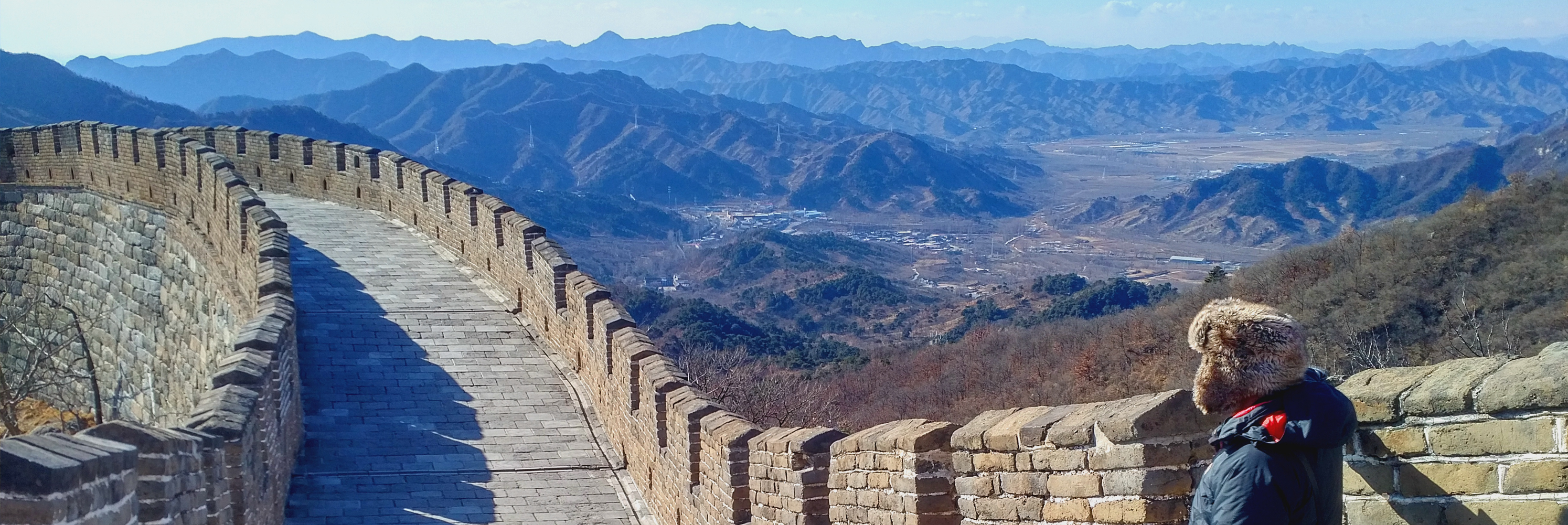
china
journey profile
China was the third and final country on my journey eastward from the United Kingdom to Australia, first stopping in Belarus, then Azerbaijan and finally China.
Where: Beijing, Mutianyu. China, Asia.
When: January 2018
What: The Forbidden City, Tiananmen Square and Gate of Heavenly Peace, Lama Buddhist Temple, Summer Palace, CCTV Trouser Tower, CCTV Broadcast Tower, Temple of Heaven, Wangfujing Street, Scorpion snacks, Walking along the Great Wall of China at Mutianyu, Qianmen Street, National Museum of China, Bell and Drum Towers.
How: International flight, walking, taxis.
Country counter: Country No.79
Illnesses or mishaps: Sightseeing in the biting cold of a Chinese winter and unable to procure the services of taxis; dealing with an unpalatable level of security; contending with the Great Firewall of China.

China's profile looms increasingly large on the international stage. A giant country in east Asia, one with more than its fair share iconic sights and world wonders, China positively demands that you visit her. Superficially speaking, if you consider yourself a kosher, dedicated traveller, you need to have China in your travel backstory somewhere - especially if you're engaged in a personal quest to visit all (new) Seven Wonders of the World. Alongside countries such as the United States, Russia and India, China is a place that simply must be experienced first hand. At least once. China was the least-researched country of the trio of countries on our trip eastward from Europe to Oceania. Aside from the obvious landmarks and icons most of us are familiar with, I touched down in China, my 79th country, under-prepared and not really sure what to expect.
Admittedly our visit to China could have been several weeks long but, alas, was far shorter than I would have liked. I'm not of the frame of mind to claim I've "done China" when I barely left Beijing. Sure there was a lot left undone and unseen but the fact is that in travel you have to take the opportunity to experience a new country when the chance presents itself no matter how limited; a visit to Azerbaijan left us with few onward options to travel eastward and, whichever country that was to be, it needed to have a (preferably direct) airline connection down to Australia. China was the obvious choice, even though we had earmarked it to be part of bigger adventures in the future: the Trans-Siberian Express or a double country trip with Mongolia. As it was China tantalised us with her sights and teased us with her culture during our limited four-day stay in her capital Beijing.
When seen from above, Beijing is an unremarkable, even depressing, city to behold. No single building dominates; surprisingly Beijing doesn't have a dramatic skyline to speak of, almost expected of major capital cities these days. A trip up to the top of the old China Central Television Tower in the city's west confirmed that, from a distance at least, Beijing was not exactly photogenic. In the biting winds and sub-zero temperatures of the exposed observation deck hundreds of metres above the city, and seemingly risking frost bite on my hands in doing so, I did in fact take a couple of photographs of Beijing from above - not because it was beautiful but only because I'd paid around £10 to get up there in the first place. I realised there was a reason that, when news programmes feature a story about the Chinese economy, they default to stock footage of a glitzy Shanghai skyline and not the Chinese capital. That's because Beijing doesn't really have one.
It's just as well then that I've always found glass tower-dominated skylines a little vacuous and soul-sapping anyway; initially dramatic, they are devoid of culture, character and a sense of people and place. And, as I was to find, Beijing, whilst vast, is a low-level city on a more human scale, one which needs to be experienced at street level with, perhaps, the vulgar excesses of corporations and capitalists to build skyward reserved for other unluckier Chinese cities. Beijing is a city of small alleyways selling unidentified fried creatures on sticks; a city with small open air stages for local opera mime artists to perform when they fancy; it's the city of the Hutong and city of the bicycle. Beijing is a city whose character is to be found at street level only. Dramatic cityscape enthusiasts need not apply.
After a much-needed four hour daytime sleep on arrival in Beijing to stave off the worst of the jet-lag from our flight from Baku on Azerbaijan Airways, we found ourselves hot-footing it in the dying winter daylight to what is the world's largest, and certainly its most notorious, public square. I challenge you to hear the words "Tiananmen Square" uttered and to not have the shocking footage from 1989 of 'Tank Man' standing in front of a line of rolling army tanks playing over in your mind (watch here). Tank Man's identity, and indeed fate, remain unknown. This enduring image is etched into the minds of Westerners who refer to this as the "Tiananmen Square Massacre" but also in the minds of the Chinese themselves who refer to this more ambiguously as the "June Fourth Incident". This 'incident' goes a long way to explaining the unpalatable level of security we experienced in and around Tiananmen Square. What is the world's largest expanse of public square has been carved up with the use of seemingly kilometres of metal fencing which is designed to restrict access and slow down the flow of people to a snail's pace. Airport-style security, complete with passport check, bag scanners and rub downs make a visit to Tiananmen a thoroughly frustrating, and anger-inducing, experience. Giant lampposts in the square house speakers, flood lights and at least a dozen CCTV cameras each. The over-zealous security staff, some undertaking their duties with a robotic sadism, show that this is no light-hearted security effort. It's also difficult not to notice mobile police vans and checkpoints on approach to the square itself, as well as soldiers goose-stepping in their fives or sixes, nor the police with riot shields and gas canisters. On several occasions I noticed that, as foreigners proffering their British passports, we were treated more leniently than what I presume were local people; indeed, at one point we were positively waved through blasé fashion. It was clear, then, what these security measures were all about: controlling Chinese citizens. I've been to police states (Uzbekistan) and countries run by the military (Burma) before but, I have to say, I found the whole experience truly confronting. And this, my introductory experience of China, was to leave a lasting impression, one which tainted my perception of everything else from thereon in.
Having gained access to this most infamous of squares we were faced with another icy chill, although this one was purely meteorological; the square's vast open space provided the perfect conditions for the icy wind to gather strength. As the sun began to set, the temperature plummeted and thus, our experience in the world's most infamous of places was short-lived - just long enough for me to photograph the iconic portrait of Chairman Mao above the Gate of Heavenly Peace lit in the orangey gold of a winter sunset.
From the largest public square in the world to the largest palace complex in the world, the next day we set off for the glorious Forbidden City built by a million labourers and home to the Emperor until as late as 1924. Confusion about how and where to purchase entry tickets meant that this most popular of Beijing sights absorbed a significant portion of our day. Just north of The Forbidden City, a further ticket purchase permitted us entry to Jingshan Park from which we could survey the giant palace in all its glory from a high vantage point. There was just enough daylight left to head to the Bell and Drum Towers and the Hutong in the central Dongcheng district where, as luck would have it, we also discovered a great coffee chain called Caffè Bene into which we positively threw ourselves for a much needed hot drink and cake out of the ferocious biting cold.
A trip to Beijing is a golden opportunity to walk along the famous Great Wall of China and, from Beijing, there are two main options: Badaling (at 80 kilometres north of the city it is the nearest but also most visited and therefore the most commercialised section) and Mutianyu (further outside of the city with less visitors). I am very glad we ended up at Mutianyu (by default rather than by design) because, off season and harder to get to, there were times when we had entire stretches of the wall, between its 26 Ming-era watchtowers, entirely to ourselves. Aside from a group of Americans, an Italian couple and, bizarrely, a stray cat, we walked the 3 kilometre stretch of Mutianyu without much human traffic to spoil the experience. The beige blocks of the wall snake up the taupe-coloured scrub of the mountainside and, set against the deep purples of the wider mountain range in the distance, cut a dramatic sight; this stretch of the Great Wall in winter is a travel photographer's dream. Mutianyu is a rare chance to photograph an iconic wonder of the world without half of humanity being there with you. Of course, I never expect to have such places like this to myself when travelling - it's just great when luck goes your way and it's just you + camera + world wonder.
Having had my bones frozen from the outside in while travelling around Belarus and Azerbaijan, my stamina for more cold had long run out. With daytime temperatures now hovering around -3°, and with the wearing of multiple layers just plain ineffectual at keeping out the Beijing cold, our choice to hire a driver for a day was, in my opinion, clearly the safest one - especially so because taxi drivers in Beijing, we discovered the hard way, are extremely reluctant to stop for Western visitors. The thought of being stranded in an unknown part of Beijing in sub-zero temperatures trying to see the sights and unable to get a taxi back to the warmth of the hotel was a worrying one. So, for the princely sum of 700CNY (around £80) we saw the Chinese capital's musts the easy way and, more importantly, the warm way. First stop was the Summer Palace perched on the banks of a very frozen Kunming Lake, then Tibetan Buddhist Lama Temple complete with Monk asleep in the corner and wafting incense, the aforementioned CCTV Tower with views across Beijing and the bizarre CCTV headquarters known locally as 'Trouser Tower'. Our last and final stop was Caffè Bene for a coffee and an obligatory, and rather Chinese, Cinnamon Honey Bread. We'd seen everything we had wanted and avoided frost bite in the process.
It's a sad fact that the glorious and the notorious coexist uncomfortably in the Chinese capital. I struggled to reconcile the beautifully ornate lakeside palaces and technicolour pavilions and temples with the overt militarism and oppressive security enforced by the communist state. Beijing is indeed a city with a split personality. China - country number 79: complete.
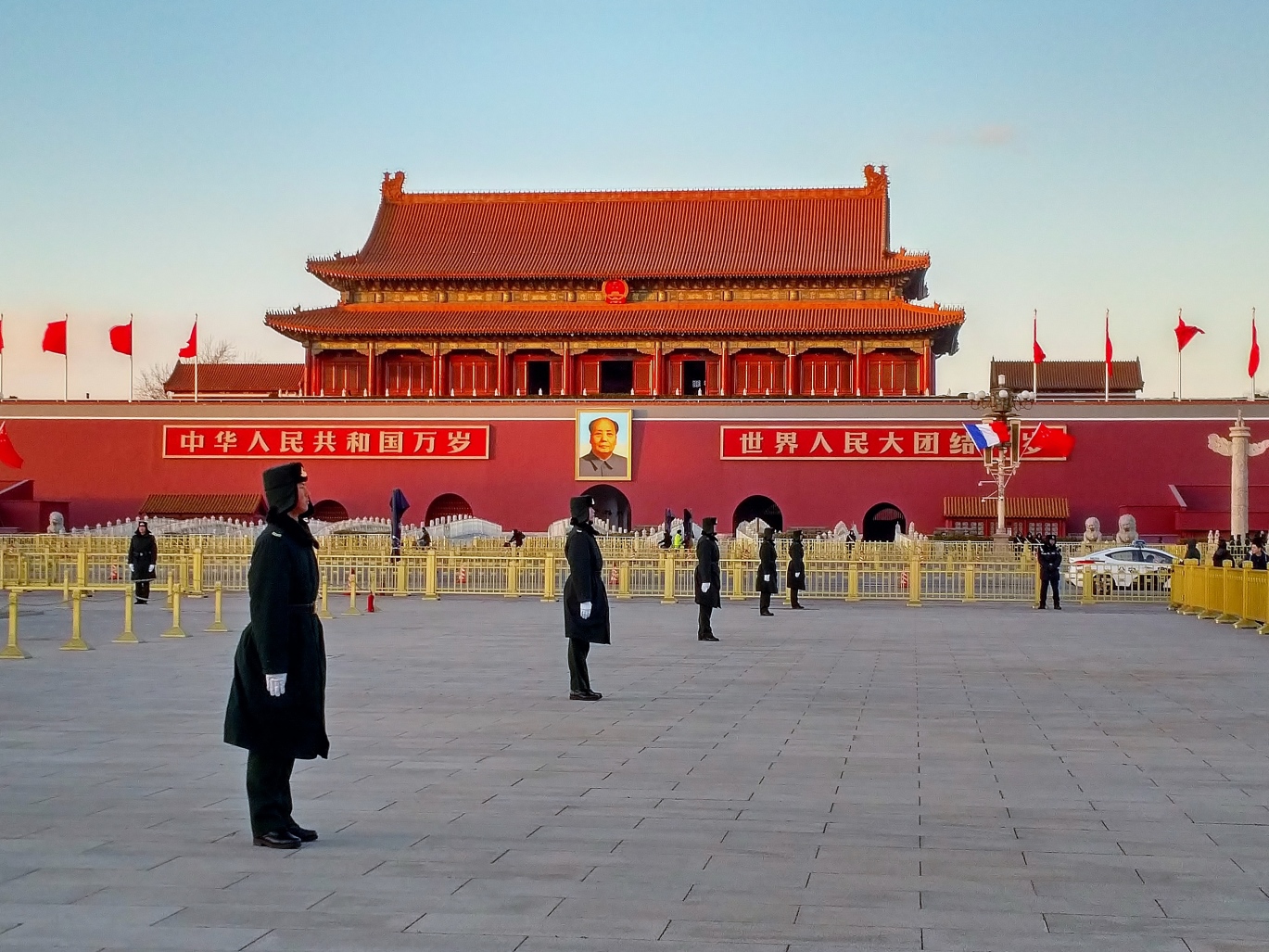
A soldier stands guard outside the Gate of Heavenly Peace in Tiananmen Square featuring the iconic portrait of Chairman Mao.
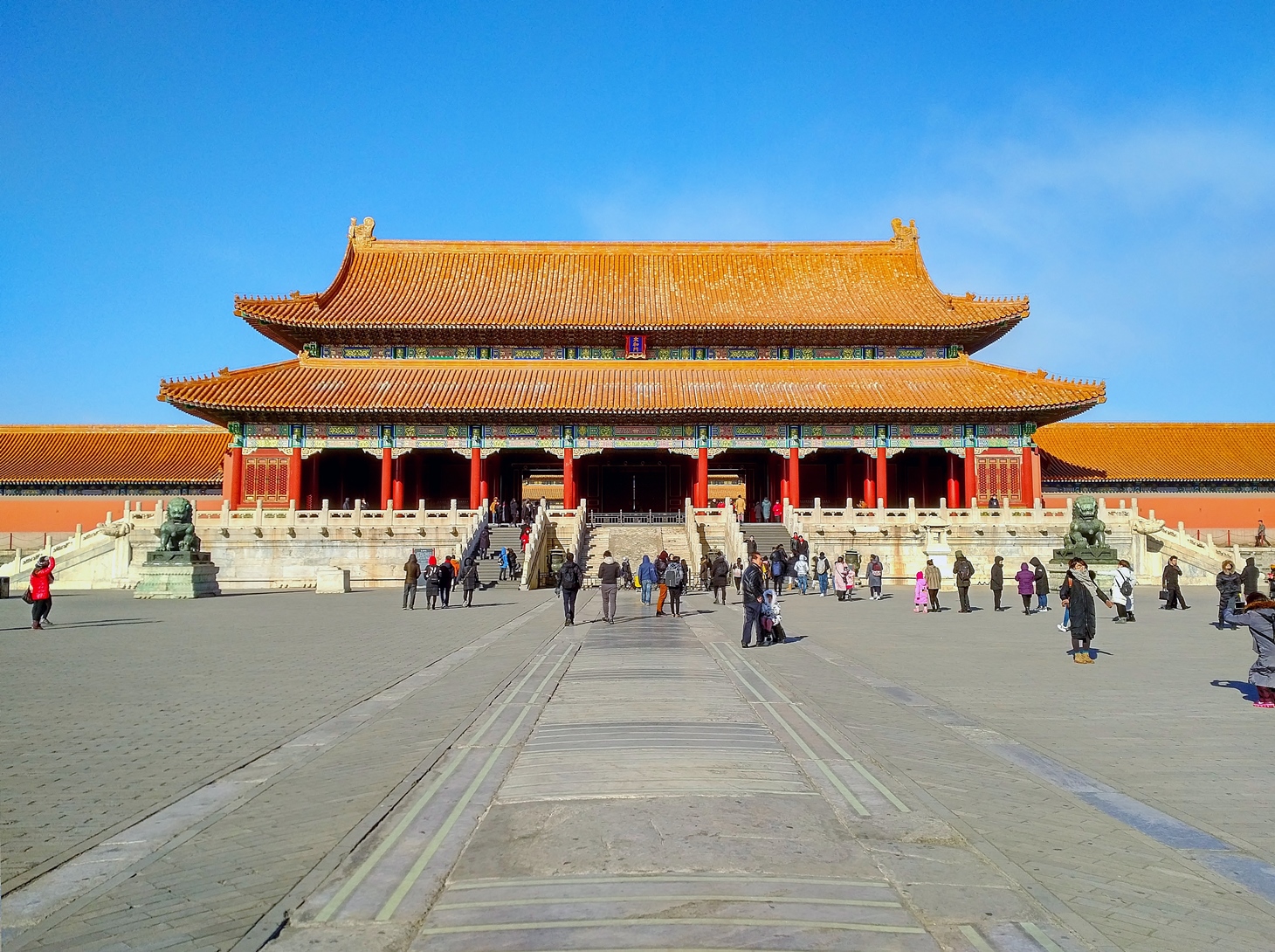
Inside The Forbidden City: the Gate of Supreme Harmony.
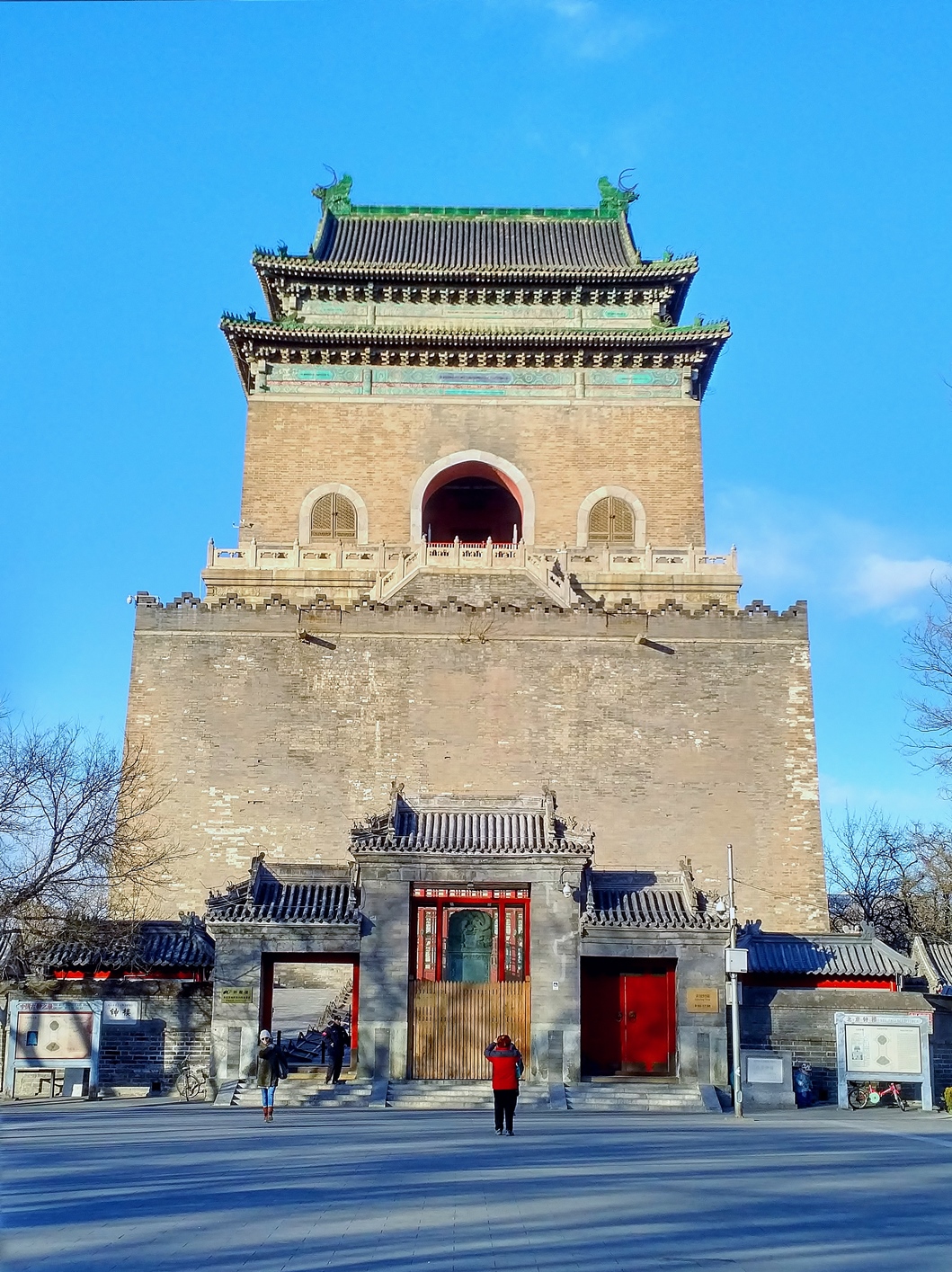
The Bell Tower dates back to 1420.
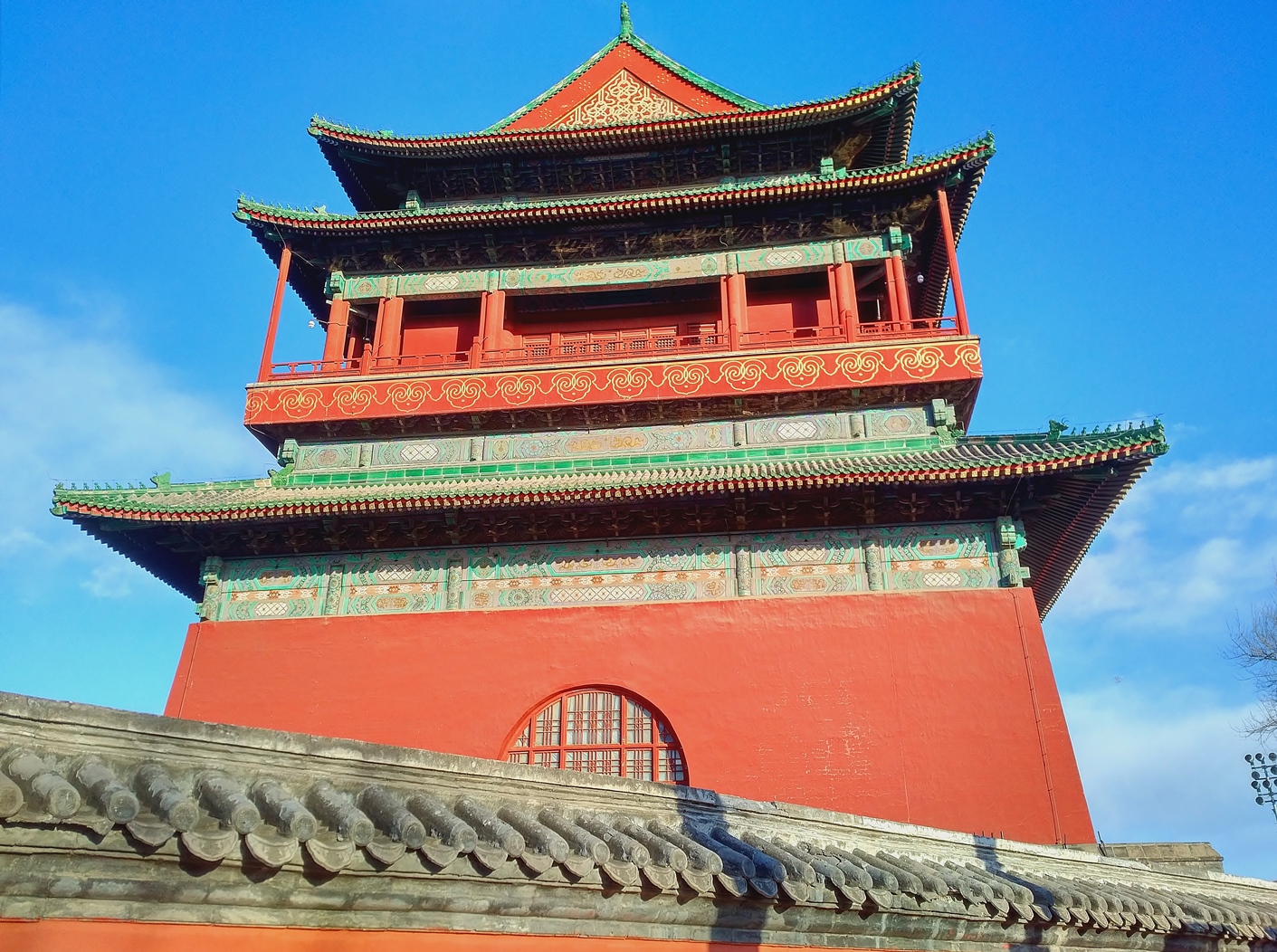
The Drum Tower was used to announce the time (the drum was played at night and the bell at daytime).
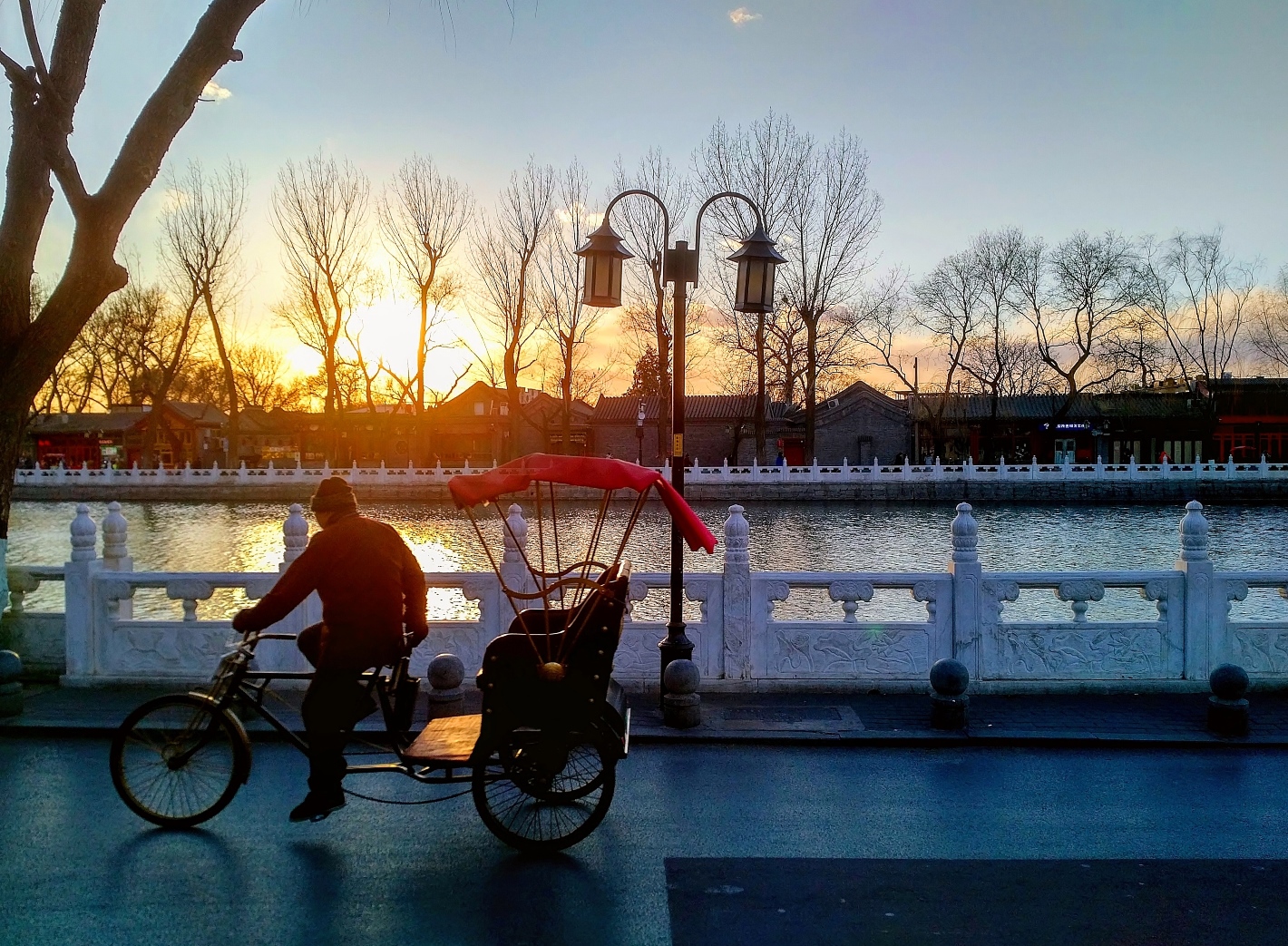
A rickshaw driver is silhouetted in the sunset in the traditional Hutong district of Beijing. The river here is completely frozen.
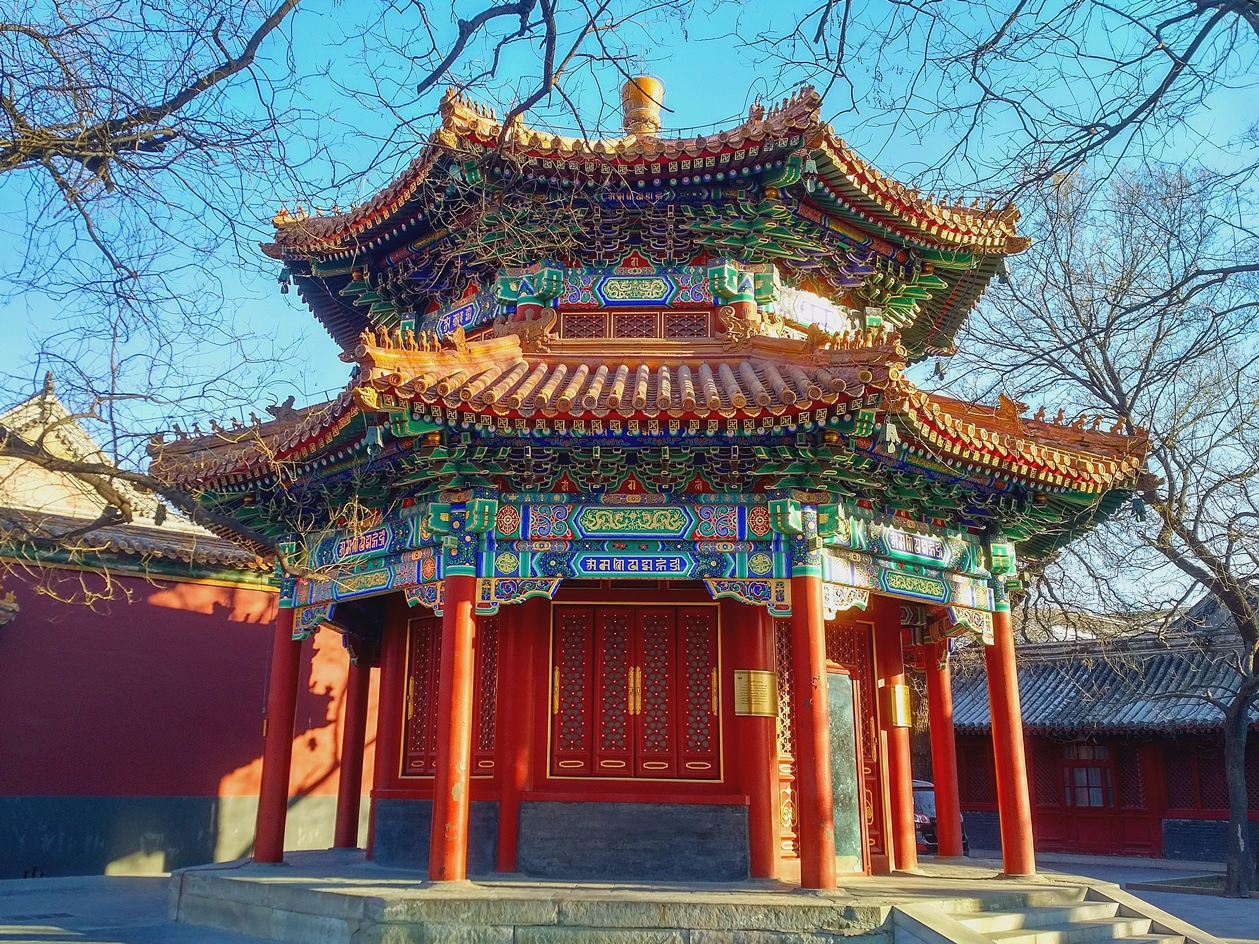
The West Tablet Pavilion at the entrance to the Lama Temple.
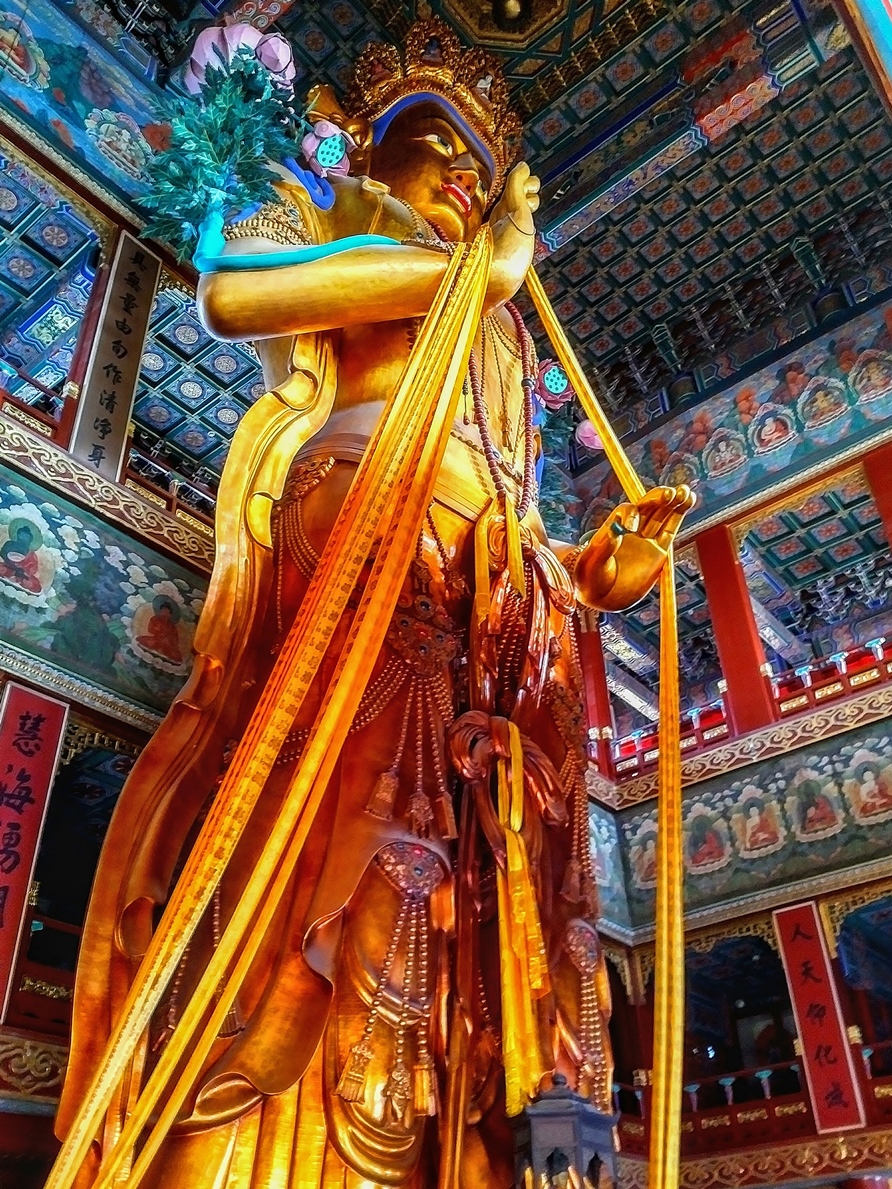
The Lama Temple's giant gold Buddha carved from the trunk of a single Sandalwood tree.
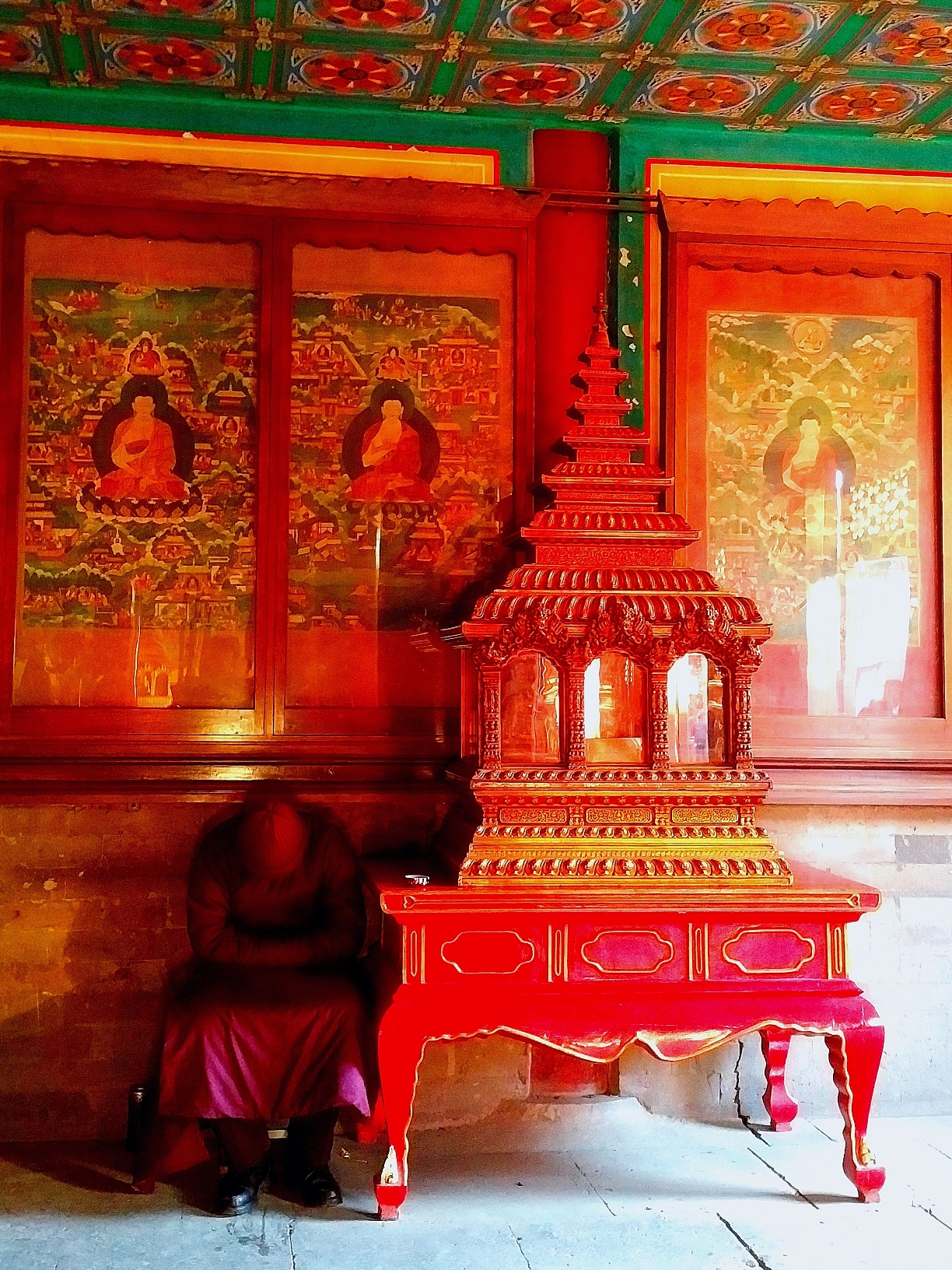
A monk takes a break in the Lama Temple.
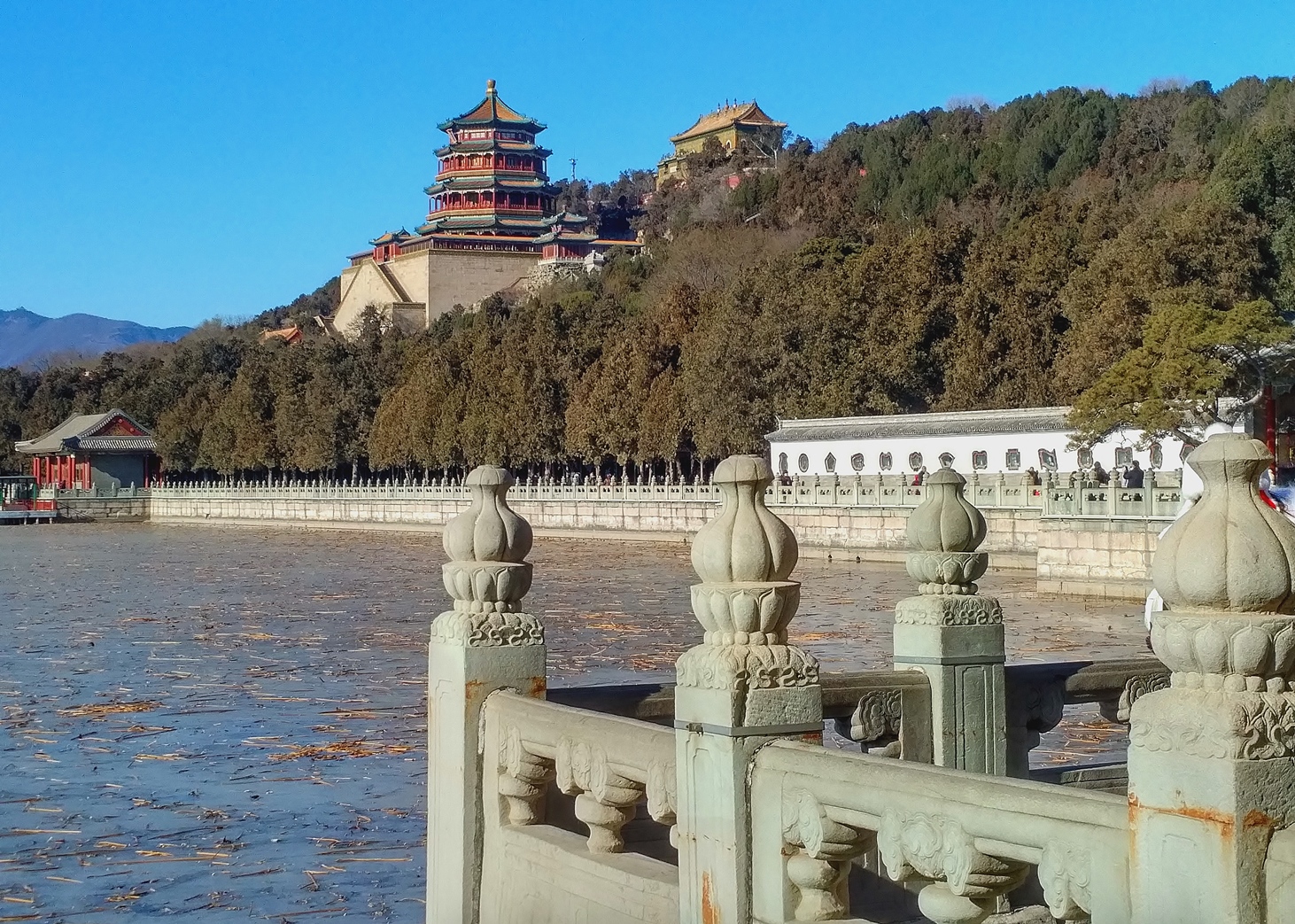
The Tower of Buddhist Incense of the Summer Palace surveys a frozen Kunming Lake. Temperatures rarely got above freezing during our time there.
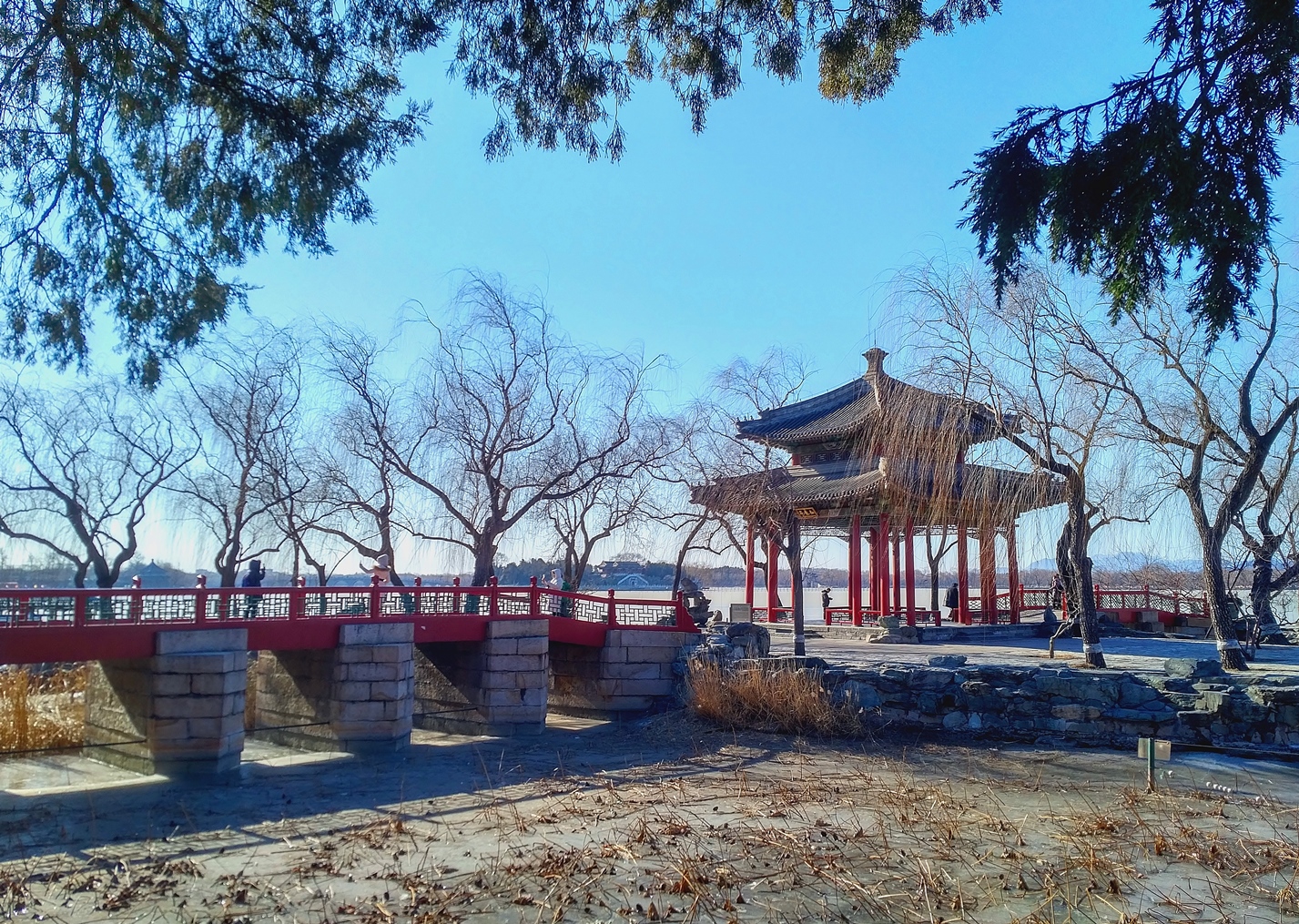
A decidedly wintry Summer Palace: a small bridge surrounded by a frozen Kunming Lake.
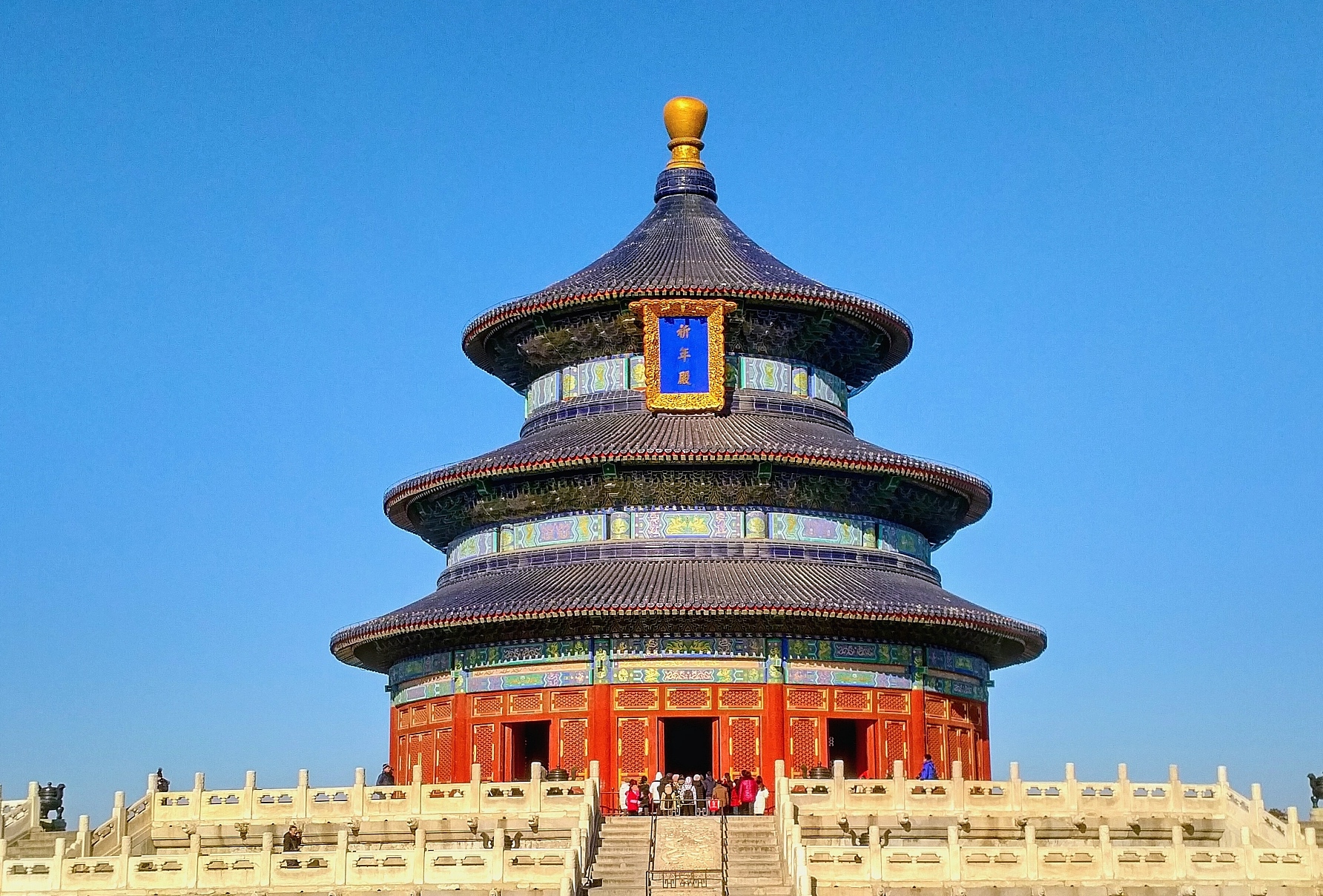
The Hall of Prayer for Good Harvests at the Temple of Heaven. A cold blast from Siberia meant that the infamous Beijing smog was blown out to the East China Sea blessing us with these deep blue skies.
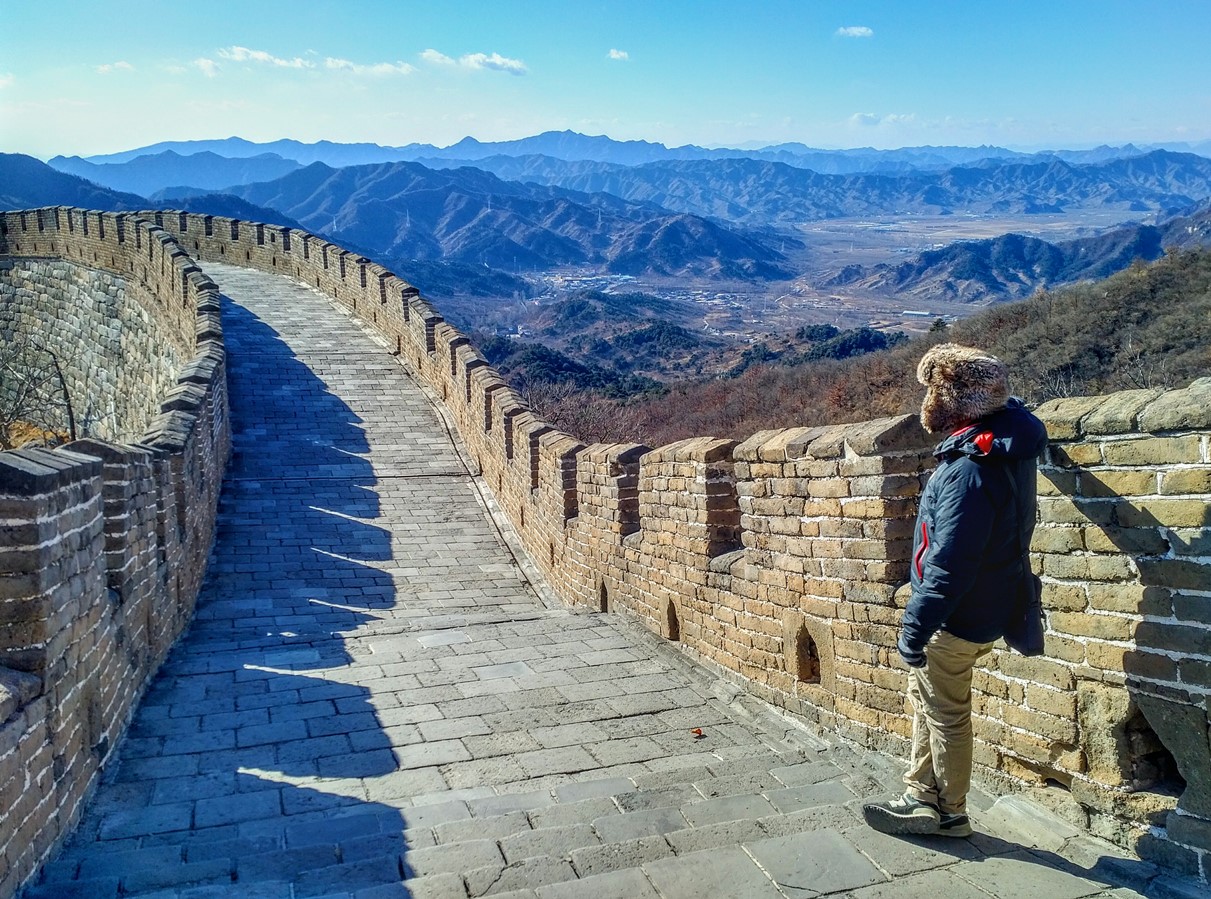
Walking over two kilometres of the Great Wall of China at Mutianyu.
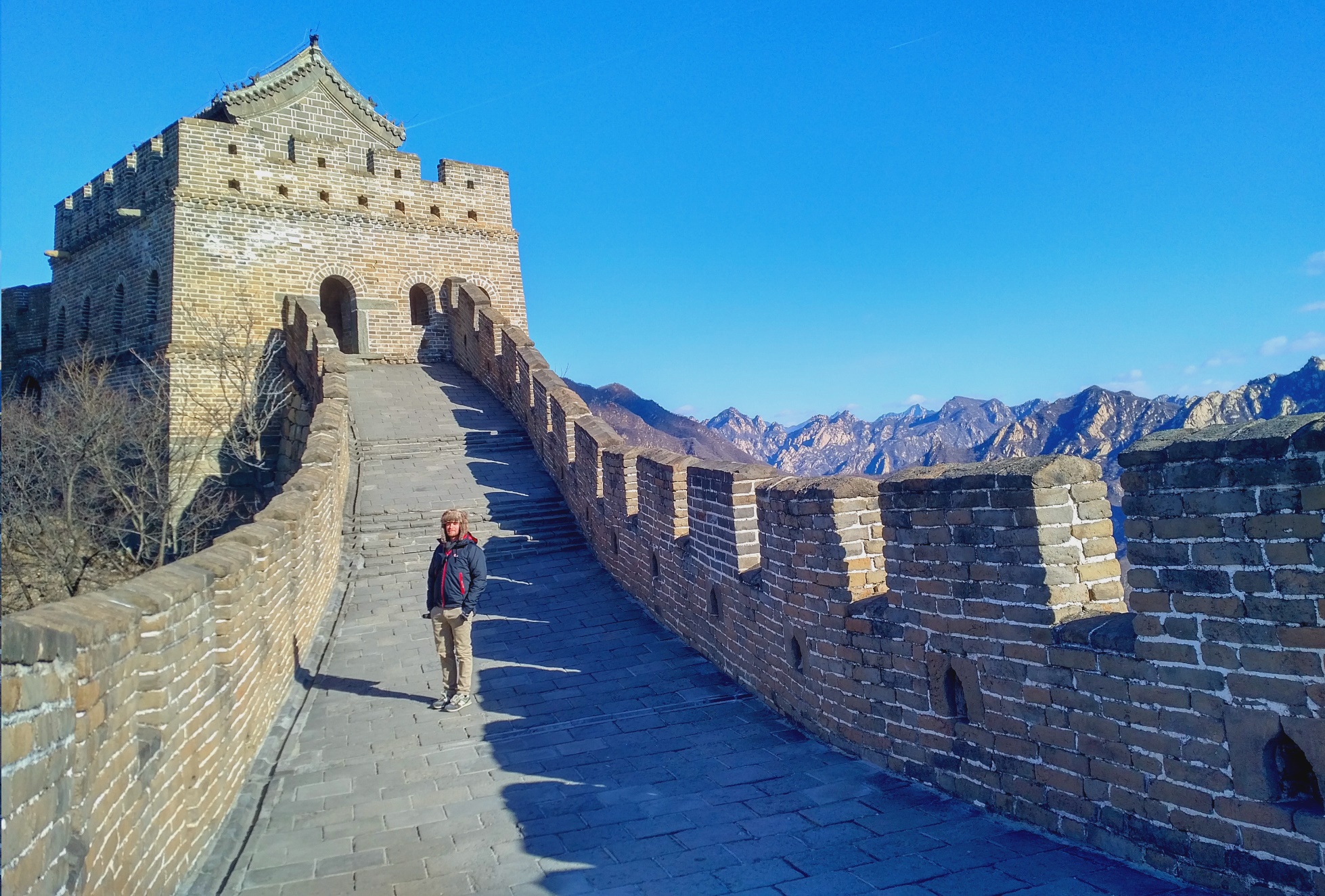
Walking over two kilometres of the Great Wall of China at Mutianyu. It's -5° and I'm wearing everything I own.
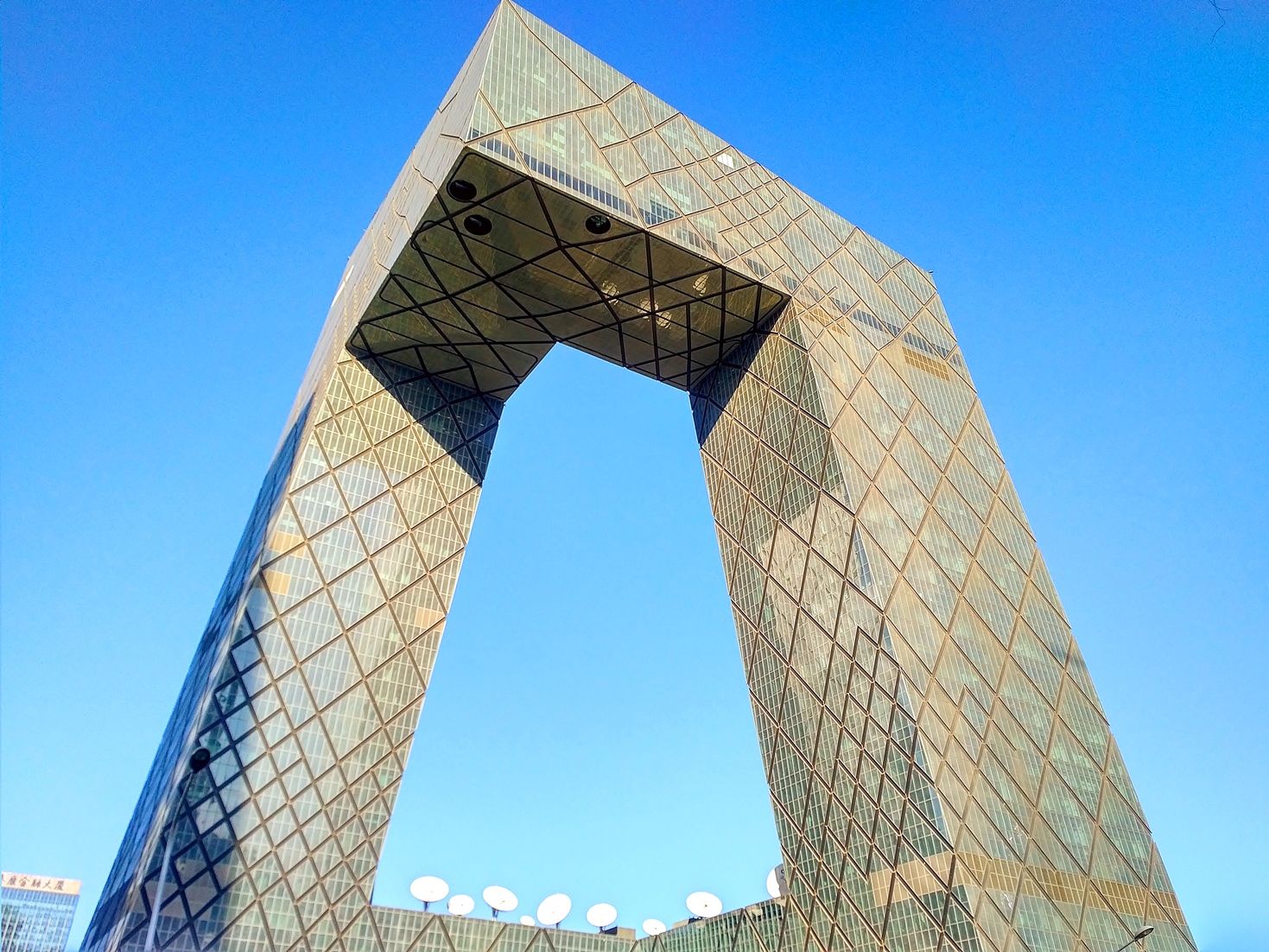
China Central Television: the Trouser Tower. For a state where freedom of speech is tightly controlled, the Chinese broadcaster has the apt acronym of 'CCTV'.
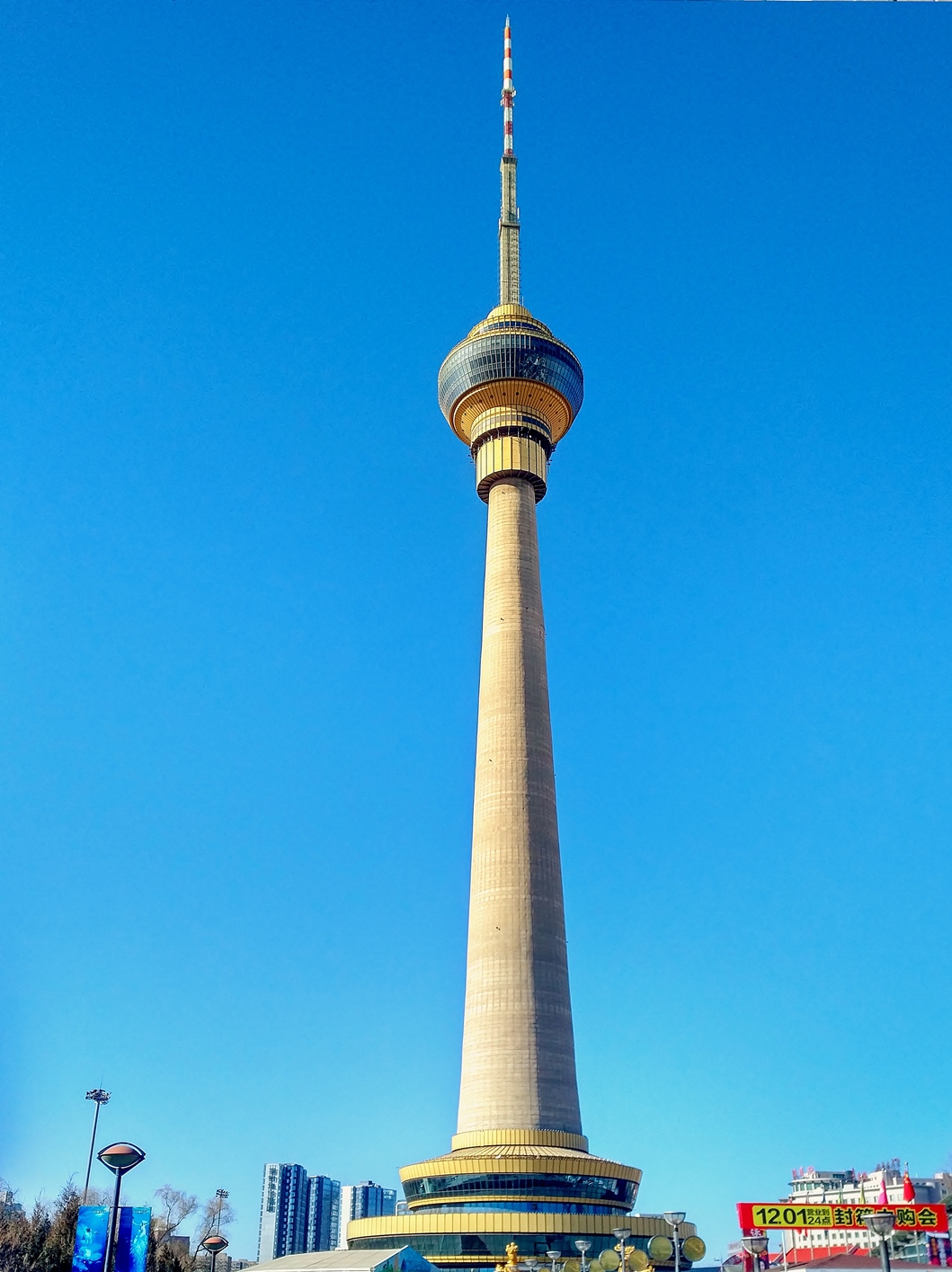
The Central Radio and TV Tower on the western edge of Beijing, the tallest structure in the city.
travel tips, links & resources
- Carry your passport with you if you want to enter Tiananmen Square. The square has airport-style security and guards will want to check your identity before permitting you access to this most controversial of places.
- A good Western-style coffee shop we found during our time in Beijing was Caffé Bene. You can be assured of a quality coffee and great cakes.
- All Western social media, including YouTube, WhatsApp, Pinterest, Facebook and Twitter are blocked in China. You'll also be forced to use Bing instead of Google; search results were therefore limited. Do your research before you leave.
- We were blessed with clear blue skies during our time. However, Beijing is renowned for dangerous levels of smog. If you suffer with breathing-related ailments, ensure you take any medication and a quality breathing mask with you.
- Beijing's international airport is big and busy. Make sure you set aside plenty of extra time to get through check-in and security for your departure. You may need to take a train from the departures area out to your gate like I did, adding extra time.
- Hailing down a taxi in Beijing was nigh-on impossible. The sad fact is that, because of the language barrier (which is significant in China), drivers are extremely reluctant to pull over knowing, perhaps, the communication difficulties which lie ahead. Therefore don't rely on taxis to get you back to the hotel - have a plan B. This is even more important in the freezing temperatures of a Beijing winter. For the same reason, carry your hotel's bilingual business card so that, if you do manage to hail a taxi, they know where they're going.
- When bored, like standing in a queue, keep an eye out for signage translated into English. Often the translations are rather hilarious and may just help you to while away the trapped minutes.
